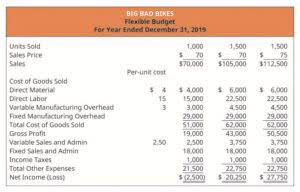
By comparing income statements across different time frames, analysts can gain valuable insights into a company’s financial progress and make informed decisions. For a full understanding of a company’s profitability, pairing net income with Cash Flow Management for Small Businesses free cash flow is your best bet. Net income is found on the income statement; free cash flow is found on the cash flow statement.
Therefore, they must know how to read financial statements, including the income statement. To calculate your net payroll income deduct total expenses from your gross income. Ensure that you include all sorts of expenses including taxes, depreciation, interest, and any other form of deductions. These expenses include both operating expenses and non-operating expenses. Operating expenses consist of costs like salaries, rent, utilities, marketing, and cost of goods sold (COGS). Non-operating expenses include interest payments on loans, income taxes, depreciation, and amortization.

Revenue can also include income from investments, royalties, or other sources, depending on the nature of the business. In conclusion, net income is a vital metric in understanding a company’s financial health and evaluating its performance. Proper interpretation, however, requires careful analysis of the accounting methods used and examining the context of the business to ensure accurate assessment. While it would be nice if the net income of every stock in your portfolio rose each year without fail, that’s unlikely to be the case. Net income is the result of subtracting a large number, total expenses, from another large number, total revenue.

In cash accounting, these two accounts are unnecessary because everything is recorded at the time of the transaction. Although net income is not directly calculated on the balance sheet, understanding these components helps you comprehend how income flows through your business. Net income is shown on the income statement, but it also flows through to the balance sheet. It’s not to be confused with other terms such as ‘gross profit’ or ‘operating income’, which we’ll delve into later. An asset account is a general ledger account used to sort and store the debit and credit amounts from a company’s transactions involving the company’s resources. The totals now indicate that Accounting Software, Inc. has assets of $16,300.

Sage makes no computing net income using accounting equation representations or warranties of any kind, express or implied, about the completeness or accuracy of this article and related content. Knowing how to calculate net profit gives you control, but keeping it accurate and consistent can feel like a lot of work. Net income alone doesn’t tell you how efficiently your business is running. Net income can be affected by one-off events that don’t represent your business’s normal operations. For example, if you make a sale on credit, the revenue shows up in your net income right away, even though you won’t receive payment until the following month.
In this blog post, we’ll understand how to calculate net income by discussing formulas, components, and their importance. To build a successful business and keep it successful, entrepreneurs must have a clear understanding of their financial health and operational efficiency. However, to leverage its full potential and unlock new opportunities for your business, it’s essential to have the right financial tools at your disposal. It’s not just about numbers; it’s about making informed decisions that can shape the future of your company. As Net Income measures the overall success or sustainability of your business, it’s essential to include its calculation when creating a strategic financial forecast.

The discretionary corporate decisions by management can influence a company’s net profits too. The net income of a company can be a misleadingly measure of profitability and portrayal of its current financial state from a liquidity and solvency standpoint. The earnings per share (EPS) of a company is calculated by dividing net income by the weighted average of total number of shares outstanding.